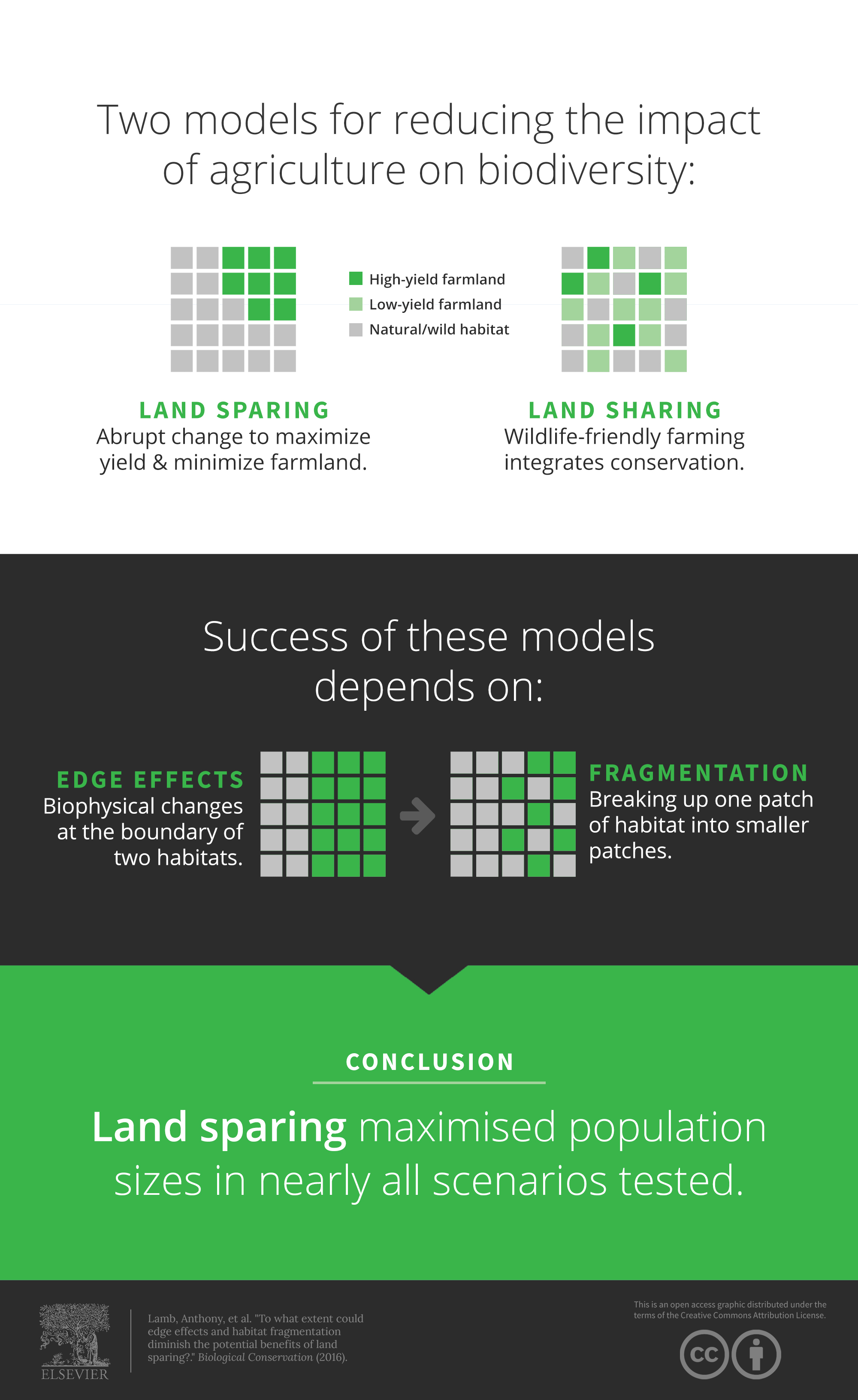LAY SUMMARY
There are two models for reducing the impact of agriculture on biodiversity: land sparing and land sharing. Their success depends on edge effects and fragmentation of patches of farm vs habitat. Land sparing worked the best for preserving biodiversity in birds.

ABSTRACT
Land sharing and land sparing are contrasting proposals for minimising the impacts of agriculture on wild species. Edge effects (biophysical gradients near habitat boundaries) might reduce population sizes on spared land, particularly in highly-fragmented landscapes, so might change conclusions about whether land sparing or land sharing is better for species’ persistence. We assessed this possibility by modelling the population sizes of 120 Ghanaian bird species in the presence of a range of hypothetical edge effects under land-sparing and land-sharing strategies, and at different levels of habitat fragmentation and agricultural production. We found that edge effects can reduce population densities on spared land, and in highly-fragmented landscapes can – at modest levels of agricultural production combined with high edge penetration distances – cause the optimal strategy to switch from land sparing to land sharing. Nevertheless, land sparing maximised population sizes for more species in most cases tested. This conclusion was best supported for sensitive species with small global geographical ranges, which are likely to include those of greatest future conservation concern. The size of patches of spared land affected conservation outcomes: population sizes were maximised under a land-sparing strategy that spared large blocks of natural habitat of ~ 1000 or, better, ~ 10,000 ha. To effect land sparing in practice would require policies that promoted both increases in agricultural yield and the establishment or protection of natural habitats on spared land. Because the optimum scale of patches of spared land for edge-sensitive species is generally larger than the size of individual farms, policies that facilitate coordinated action by farmers or other land managers might be required.
CITATION
Lamb, Anthony, Andrew Balmford, Rhys E. Green, and Ben Phalan. (2016). To what extent could edge effects and habitat fragmentation diminish the potential benefits of land sparing? Biological Conversation, 195:264-271. doi:10.1016/j.biocon.2016.01.006